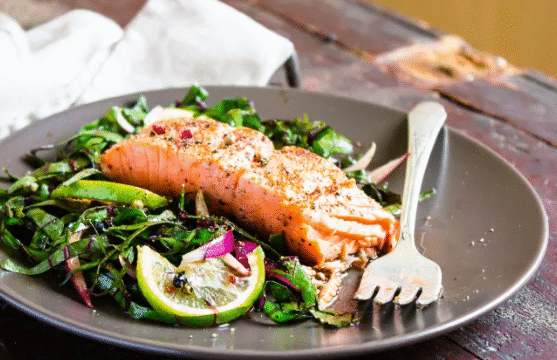Staying active is one of the best things you can do for your body and mind, but sometimes it can feel difficult to keep the motivation going. Between work, family, and daily responsibilities, exercise often slips to the bottom of the list. The good news is that fitness does not have to feel like a strict plan or a competition. When you set healthy and friendly goals that match your lifestyle, you can stay active in ways that feel natural, enjoyable, and sustainable.
A healthy goal is one that supports your overall well-being without pushing you to exhaustion or discouragement. A friendly goal, on the other hand, treats you kindly. It allows room for rest, flexibility, and fun while still guiding you toward improvement. Combining both creates a balanced approach that helps you stay active consistently.
The first step toward setting healthy and friendly goals is to think about what kind of movement makes you feel good. Not everyone enjoys the same type of exercise, and that is perfectly fine. Some people find joy in walking outside, while others love dancing, cycling, or yoga. Instead of forcing yourself into a routine that feels uncomfortable, choose activities that bring you energy or a sense of calm. When movement feels rewarding, it becomes easier to stay active without relying on willpower alone.
Start small and gentle. If you have not exercised in a while, even a few minutes of daily movement can make a big difference. A short walk after meals, stretching before bed, or light exercises at home are simple ways to get started. These small actions build confidence and create momentum. Over time, they develop into habits that feel effortless. The goal is not to do everything at once but to build a rhythm that feels right for you.
It is also important to set goals that are realistic. Sometimes people set ambitious targets—like running long distances or exercising for hours every day—only to burn out after a few weeks. Realistic goals allow you to make steady progress without overwhelming yourself. For example, you could decide to move for twenty or thirty minutes most days of the week, choosing activities that you enjoy. Once that becomes part of your lifestyle, you can gradually increase your intensity or duration.
A friendly goal also considers your schedule and daily life. If you work long hours or care for a family, your routine may look different from someone who has more free time. Choose goals that fit your lifestyle instead of trying to fit your life into your goals. Short, effective workouts can be just as beneficial as longer sessions. The key is consistency rather than perfection. When you stay flexible, you can adapt your routine without feeling guilty or pressured.
Another way to make your goals healthier is to focus on how movement makes you feel rather than how it makes you look. Appearance-based goals often create unnecessary stress and disappointment. Shifting your focus toward energy, strength, balance, or peace of mind builds a more positive relationship with exercise. You might notice that you sleep better, feel calmer, or have more patience throughout the day. These benefits are powerful motivators that help you keep going.
It can also help to connect your goals to something meaningful. Maybe you want to stay active so you can play with your children, travel more easily, or maintain your independence as you age. Having a personal reason gives your goals purpose and makes them easier to stick with. When your fitness journey connects to your values, it becomes part of who you are rather than just another task to complete.
Variety is another key element of healthy and friendly goals. Doing the same activity every day can become repetitive and may even lead to physical strain. Mixing things up keeps your body challenged and your mind engaged. You might alternate between walking, stretching, swimming, or light strength training. Even household chores, gardening, or taking the stairs count as physical activity. The more you blend movement into your everyday life, the more active you become without realizing it.
Listening to your body is also a crucial part of staying active the healthy way. Rest days are not signs of weakness—they are part of recovery and long-term success. Your body needs time to adapt, repair, and grow stronger. If you ever feel pain, fatigue, or loss of motivation, it may be a sign to slow down. Gentle movement like yoga, slow walks, or stretching can help you stay active while giving your body a break.
Staying active also involves a positive mindset. Instead of thinking about what you have not achieved yet, focus on what you have accomplished. Every small effort counts, whether it is choosing to walk instead of drive, taking a short stretch break during work, or completing a workout even when you did not feel like it. Celebrating these small victories helps you stay motivated and builds self-trust.
A healthy goal also grows with you. What feels challenging today may feel easy a few months from now. When that happens, it is a sign of progress. You can adjust your goals to keep improving at your own pace. Maybe you walk a little farther, lift a slightly heavier weight, or try a new class. Progress does not have to be dramatic to be meaningful. It simply needs to be steady and kind.
Having support from others can also make a big difference. You might join a walking group, take an online fitness class, or find a friend who shares your goals. Exercising with others adds accountability and fun to the process. You can share experiences, encourage each other, and celebrate milestones together. For those who prefer solitude, tracking your progress in a journal can create a similar sense of motivation and reflection.
Nutrition and rest are often overlooked but play a major role in keeping you active. Eating balanced meals and staying hydrated fuel your body for movement, while proper sleep allows you to recover and perform your best. A truly healthy and friendly approach to fitness includes caring for all parts of your well-being, not just your exercise routine.
Above all, remember that staying active is a lifelong commitment to your health, not a short-term challenge. You do not need to compare yourself to others or follow strict rules. Your journey is personal, and every step you take counts. The aim is not to be perfect but to stay consistent, curious, and kind toward yourself.
Healthy and friendly goals remind you that fitness can be joyful. It is about finding movement that fits your mood, appreciating your body for what it can do, and staying active because it makes you feel alive. Whether you take a peaceful morning walk, dance to your favorite song, or stretch before bed, every bit of movement adds up to a stronger, happier, and more balanced you.
By setting goals that are both gentle and purposeful, you create a lifestyle that supports your well-being naturally. You no longer have to chase motivation—it becomes part of your daily rhythm. With time, these healthy and friendly goals will not just keep you active but will help you enjoy every moment of your fitness journey.






